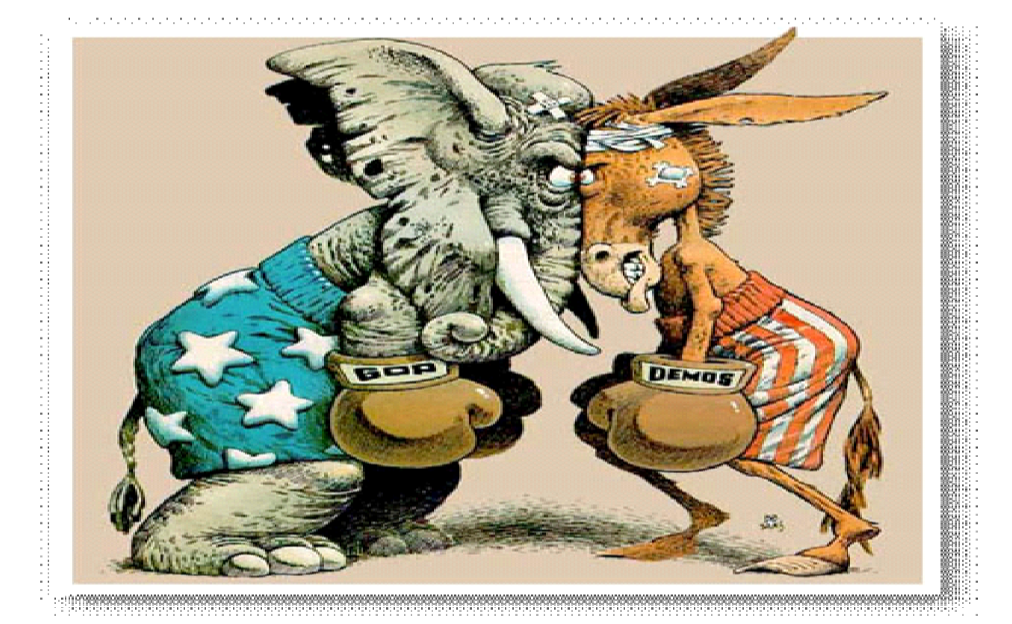4: Political Parties in Texas
- Page ID
- 129122
By the end of this chapter, you should be able to:
- Explain the political ideology of liberals and conservatives.
- Discuss the purpose of political parties.
- Assess the evolution of political parties in Texas.
- Analyze the effects of a true two-party system.
Red, Blue, Purple?
The color associated with political parties has changed over the years, introduced by the colorized maps used in election coverage on television. Just as the donkey and the elephant had come to represent the parties in the 1800s (Figure 4.1), blue and red became the standard for states that lit up blue for Democrat Al Gore and states that lit up red for Republican George W. Bush. Now, we talk about blue states—those that can be counted on to vote for the Democrat in a presidential election—and red states that can be counted on to vote for the Republican.

Did you know Texas used to be a blue state, and that, in fact, no Republican won a statewide office from 1874-1961? In fact, from the Civil War until the 1960s, the Democratic Party dominated politics in Texas. It’s hard to imagine that Texas was a Democratic state when in past years it’s felt like we did not even need to count the votes to know that the Republicans won.
So, Texas was a blue state, then a red state, but what about now? Many people say that the rising Latino population in Texas will turn the state purple. But what does that mean? If the Democrats are blue, and the Republicans are red, who’s purple? Do we have another political party? No, a purple state simply means that the state could go either way. Another name for it is a swing state. It is a state in which both parties stand a chance and both parties will probably campaign hard in a purple state to try to swing the vote their way.

